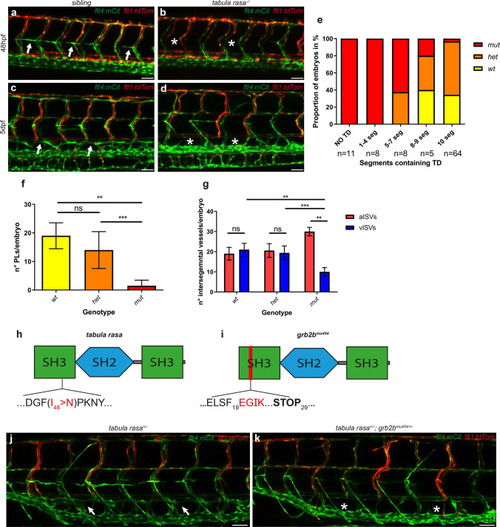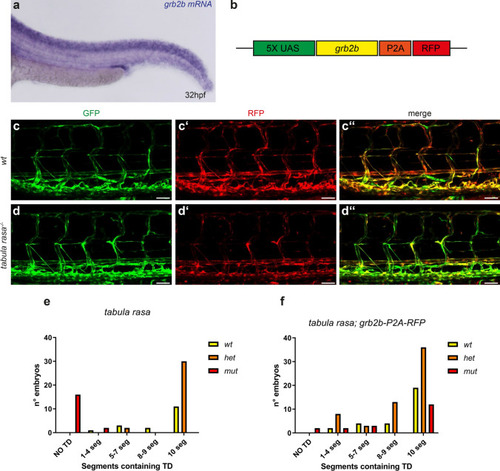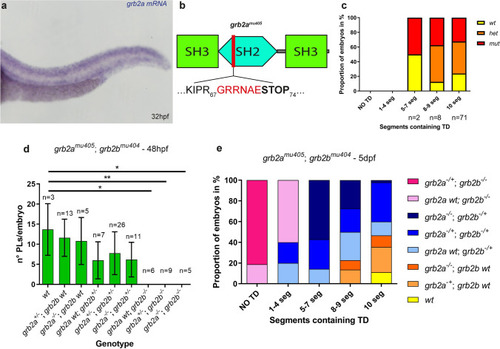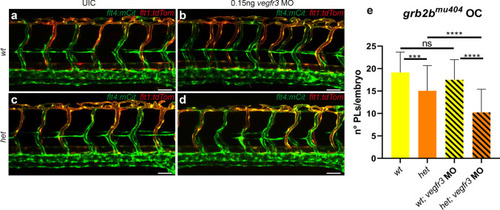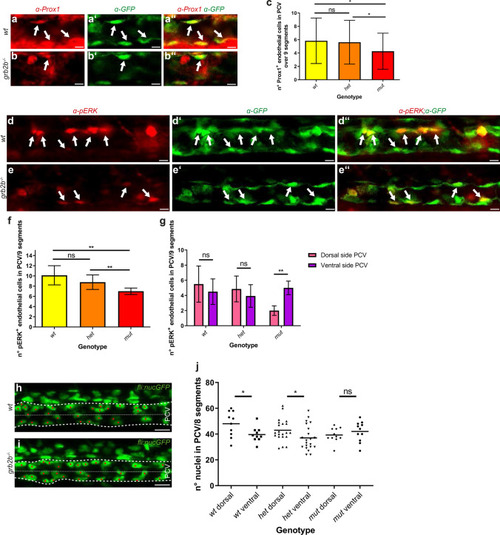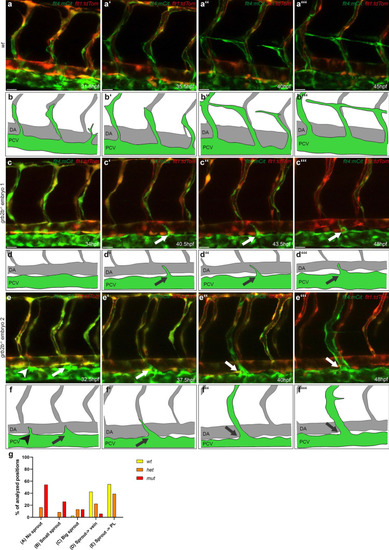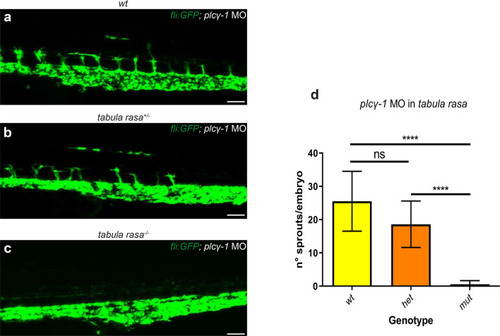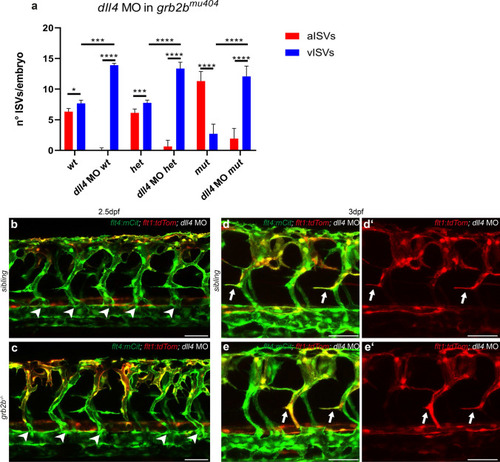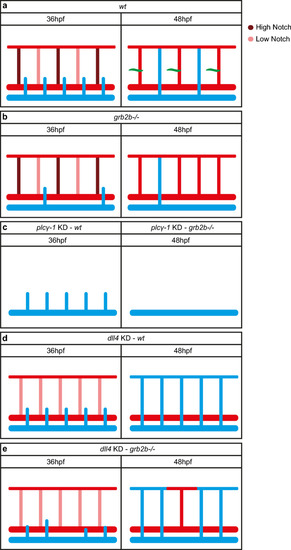- Title
-
The adaptor protein Grb2b is an essential modulator for lympho-venous sprout formation in the zebrafish trunk
- Authors
- Mauri, C., van Impel, A., Mackay, E.W., Schulte-Merker, S.
- Source
- Full text @ Angiogenesis
|
Mutations in the |
|
Endothelial-specific expression of grb2b is sufficient for normal lymphatic development. a In situ hybridization of grb2b shows expression in the majority of tissues in zebrafish embryos at 32hpf. b Rescue construct containing a 5xUAS element upstream of the grb2b cDNA which was fused with an RFP cassette via a P2A self-cleaving peptide. c–dʺ Confocal projections of transgenic flt4:Gal4; UAS:GFP; UAS:grb2b-P2A-RFP embryos from a tabula rasa in-cross at 5dpf. A tabula rasa wild-type embryo is shown in c–cʺ and a homozygous mutant in d–dʺ. e, f Quantification of trunk segments containing TD (scored over the length of 10 somites) in 5dpf embryos from a tabula rasa+/−; flt4:Gal4; UAS:GFP; grb2b-P2A-RFP in-cross. e GFP+ RFP− embryos (i.e., not containing the rescue construct) served as a control. wt: n = 17; het: n = 32; mut: n = 18. f The mutant phenotype is rescued in embryos expressing the rescue construct (GFP+ and RFP+). wt: n = 29; het: n = 60; mut: n = 19. TD thoracic duct, wt wild type; het heterozygous; mut mutant for tabula rasa. Scale bars: 50 µm |
|
Loss of |
|
PHENOTYPE:
|
|
|
|
Secondary sprouting is defective in |
|
In the absence of arteries, cells fail to sprout in PHENOTYPE:
|
|
PHENOTYPE:
|
|
|

